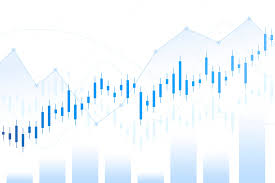Forex trading is a dynamic and exciting market where traders speculate on the fluctuations of currency exchange rates. To make informed trading decisions, traders rely on various types of analysis, and one such method is technical analysis. In this article, we will explore the concept of forex technical analysis, its key components, and how it can be applied to currency trading.
Forex technical analysis involves examining historical price data and using various tools to forecast future price movements. Unlike fundamental analysis, which focuses on economic factors and news events, technical analysis primarily concerns price patterns, trends, and market psychology. Traders use this approach to identify their trades’ potential entry and exit points.
Candlestick Patterns: Understanding Market Sentiment
Candlestick patterns are graphical depictions of changes in prices. And can provide insights into market sentiment. Patterns such as doji, hammer, and engulfing can indicate potential trend reversals or continuations. By analyzing these patterns, traders can better understand the market’s balance between buyers and sellers.
Support and Resistance Levels: Identifying Price Boundaries
Support and resistance levels refer to specific areas on a price chart that indicates potential price movements. The price tends to find temporary barriers. Support acts as a floor, preventing the price from falling further, while resistance acts as a ceiling, preventing the price from rising higher. Traders use these levels to identify potential buying or selling opportunities.
Trend Analysis: Riding the Market Waves
Trend analysis involves identifying the market’s direction and trading in line with the prevailing trend. Traders use various technical tools, such as trendlines and moving averages, to determine the strength and duration of a movement. By trading with the trend, traders increase their chances of success.
Indicators and Oscillators: Quantifying Market Conditions
Indicators and oscillators are mathematical calculations applied to price data to generate trading signals. Some of the commonly used indicators in trading are the Relative Strength Index (RSI) and the Moving Average Convergence Divergence (MACD). and Stochastic Oscillator. These tools help traders identify overbought or oversold conditions and potential trend reversals.
Chart Patterns: Spotting Trend Reversals
Some examples of chart patterns are heads, shoulders, double tops, and triangles, which provide traders with visual clues about potential trend reversals. Price movements form these patterns and can indicate the exhaustion of the current trend, signaling a possible reversal in the opposite direction.
Fibonacci Retracement: Predicting Price Corrections
Fibonacci retracement is a popular tool used in technical analysis to identify potential price retracement levels within a trend. Traders use Fibonacci ratios, derived from the Fibonacci sequence, to determine areas where the price is likely to retrace before continuing its trend.
Moving Averages: Smoothing Out Price Data
Moving averages are widely used in technical analysis to filter out short-term price fluctuations and identify the overall trend. Traders use different types of moving averages, such as simple moving averages (SMA) and exponential moving averages (EMA), to gain insights into the direction of the market.
Risk Management: Protecting Your Capital
Effective risk management is crucial in forex trading. Traders should implement proper risk management techniques, such as setting stop-loss orders and using position sizing strategies, to protect their capital from significant losses. By managing risk effectively, traders can preserve their trading accounts in the long run.
Developing a Trading Strategy
A well-defined trading strategy is essential for consistent success in forex trading. Traders should develop a strategy aligning with their trading goals, risk tolerance, and style. The strategy should incorporate various technical analysis tools and clearly define entry and exit criteria.
Backtesting and Optimization: Fine-Tuning Your Approach
Backtesting involves testing a trading strategy using historical price data to assess its performance. Traders can use specialized software to simulate trades and evaluate the strategy’s profitability and risk-adjusted returns. Traders can make data-driven decisions and refine their trading strategies by backtesting and optimizing their approach.
Common Mistakes to Avoid in Forex Technical Analysis
In technical forex analysis, it’s crucial to be aware of common mistakes that traders often make. These mistakes include overcomplicating analysis, neglecting risk management, chasing indicators, and trading based on emotions. By avoiding these pitfalls, traders can improve their decision-making process and overall trading performance.
Psychological Factors in Technical Analysis
Psychological factors play a significant role in forex trading. Traders need to manage emotions such as fear and greed, maintain discipline, and stick to their trading plans. Understanding and controlling psychological biases can enhance traders’ ability to execute their technical analysis effectively.
Integrating Fundamental Analysis with Technical Analysis
While technical analysis focuses on price patterns and market psychology, the fundamental analysis examines economic and geopolitical factors that can impact currency prices. Traders can benefit from integrating both approaches to gain a comprehensive view of the market and make well-informed trading decisions.
Conclusion
Forex technical analysis is valuable for currency traders to analyze price patterns, trends, and market sentiment. By mastering various technical analysis techniques, traders can identify potential trading opportunities and improve their chances of success.
However, it’s essential to remember that technical analysis is not foolproof. This should be used alongside other methods of analysis and risk management. Techniques.
What is the significance of technical analysis in forex trading?
Technical analysis helps traders analyze price patterns, trends, and market sentiment to make informed trading decisions in the forex market.
How can candlestick patterns be used in forex technical analysis?
Candlestick patterns provide visual representations of price movements and can indicate potential trend reversals or continuations.
What are support and resistance levels in forex trading?
Support and resistance levels are areas on a price chart where the price tends to find temporary barriers, helping traders identify potential buying or selling opportunities.
Why is it necessary to integrate fundamental analysis with technical analysis?
Integrating fundamental analysis with technical analysis provides traders with a comprehensive understanding of the market by considering both economic factors and price patterns.





